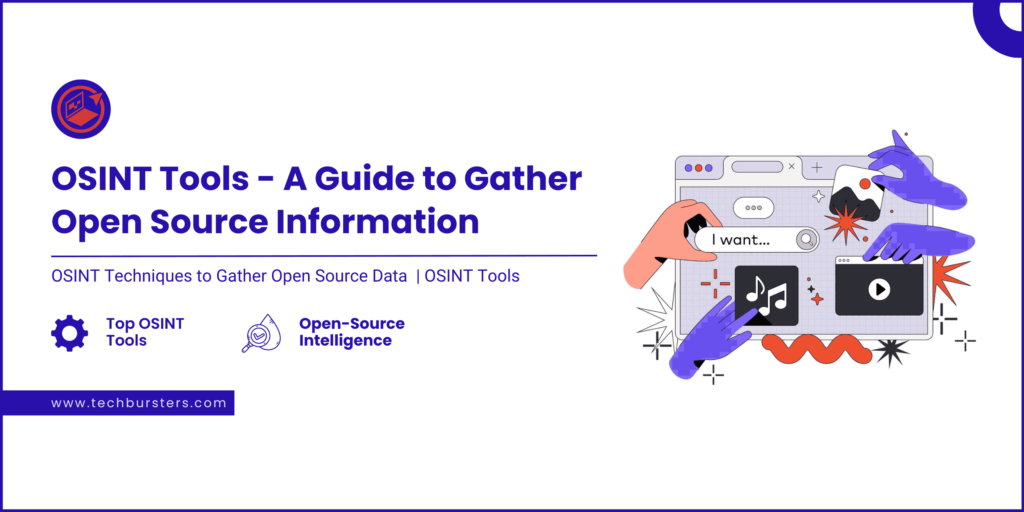
During the Cold War, open-source intelligence (OSINT) sources emerged as the primary methods for gathering and uncovering information about military rivals and their political plans. The OSINT data collection instruments support the government’s decision-making procedures, anticipating these tools to acquire a $54.1 billion share by 2027.
OSINT tools encompass assessing and integrating data sets from various public and private sources. Moreover, these tools are used for multiple purposes, which can either secure or exploit publicly available information. Open-source intelligence tools are equipped with advanced technologies, which streamline the examination of information available in different online sources.
Open-Source Intelligence (OSINT) – A Brief Overview
Open-source intelligence is the act of collecting publicly available information from various sources, mainly social media platforms, TV, journals, and newspapers. The accumulated information is processed and analyzed through several OSINT tools.
The open-source intelligence tools aggregate information from several public sources, which ensures a detailed analysis of a particular company or a user. Additionally, these instruments stimulate the identification of fraudulent activities due to an extensive analysis of the customer’s identities, intentions, and financial histories.
Top 3 OSINT Tools
OSINT tools effectively identify data breaches, adding a security layer by understanding the user’s journey. Therefore, using the right OSINT tool can help an organization boost its cybersecurity practices. Following are the top 3 OSINT tools that are most frequently used:
1) Spiderfoot
This free OSINT tool integrates with several data sources through which the examiners accumulate and analyze an entity’s IP addresses, phone numbers, and classless inter-domain routing ranges. Moreover, the Spiderfoot open-source network collects an individual’s username addresses for the accounts that are operated under a legitimate organization.
2) Intelligence X
This is an archival data collection service that stores information regarding the leaked data sets that were previously removed from the internet for legal reasons.
3) Maltego
This tool focuses on the identification of relationships among several people, domains, and companies. Maltego automates the processing of information from different data sources, which enables the users to execute an array of queries in real time. These OSINT tools are compatible with any information source that represents a public interface.
Critical Steps Involved in Streamlined OSINT Framework
Now that we have briefly examined some of the top OSINT tools, we must understand how intelligence organizations and cybersecurity agents use these tools to collect information. An effective OSINT framework is conducted through the following steps:
1) An authentic OSINT process begins with the selection of a tool, which helps in the identification of data that an organization is searching for.
2) After selecting a relevant tool, the next step is to examine the reliability of multiple open sources to ensure that only legitimate data is extracted.
3) Understand how this data manages the risk profiles of different entities. Furthermore, businesses must extract information from real-time open sources to meet regulatory compliance practices.
4) Lastly, with a stream of information available online, businesses must define the data that is relevant to their organizational needs and risk-management operations.
Good to Read:- Thunder TV APK download for Firestick | Thunder TV Chat |
Top OSINT Techniques to Gather Open Source Data
Military organizations use several automated open-source intelligence techniques to examine and combat cybercriminal activities. Some of the most widely used techniques are examined below:
- Passive Data Collection: The most common OSINT technique passively collects data from websites, open APIs, and deep web data sources. This accumulated data is then organized for extensive analysis and research purposes.
- Semi-Passive Data Collection: These techniques are more technical as they direct the traffic to the specific servers, which aim to collect server-specific data.
- Active Data Collection: Active OSINT collection modules are equipped with advanced processing technologies through which they directly access unique open ports to gather relevant information in real time.
Applications of OSINT Tools in the Public and Private Sector
OSINT tools are frequently used to enhance an economy’s operational security by proactively assessing the risk associated with the different entities. These tools tremendously facilitate the functioning of the government and armed forces as they stimulate the collection of data for intelligence purposes.
Additionally, open-source intelligence techniques help government officials evaluate security concerns in real time. These tools also facilitate risk assessment in private institutions as they stimulate the evaluation of potential business rivals and their market tactics. These operations safeguard the business’s digital systems from multiple cybersecurity attacks.
Wrapping Up
Open-source intelligence techniques stimulate multiple public servers and web sources. These modules allow businesses to evaluate the customer’s identities and their financial activities in real time. OSINT tools, backed by the latest data processing modules, intensify the identification of cybercriminal activities due to extensive passive and active data collection techniques.
Moreover, organizations use several OSINT tools to examine the user’s activities through the assessment of their phone numbers and IP addresses. These tools enhance the functionality of government officials, armed forces, and private institutions.
Related Post
